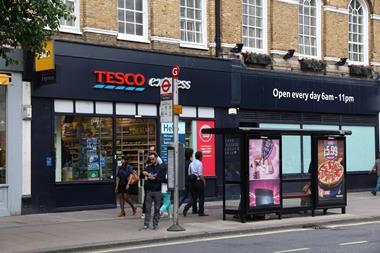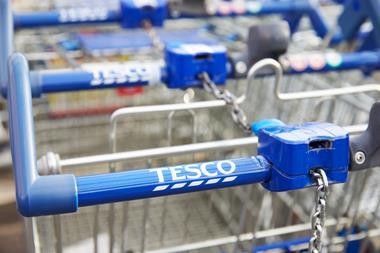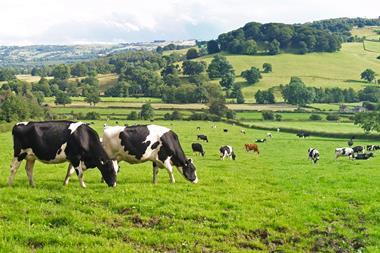Tesco has recently relocated within Carrickfergus, Northern Ireland, opening a new £16m outlet. The old 25,000 sq ft store in the De Courcy Centre closed on October 24, 2005, and has been replaced by a 50,000 sq ft one with a much improved, wider range.
However, not everyone will be pleased to see Tesco’s presence increasing. Tesco has 33 stores across the province, after opening many new and revamped stores. These outlets may bring more people to the town, but they may also have a detrimental impact on other, smaller grocers.
Many people feel the new Tesco will help improve the local economy. For example, the number of people employed by Tesco has now doubled. It is also estimated that a quarter of Tesco’s Newtownabbey store customers came from the Carrickfergus area - and they may well return to the locality.
CACI can reveal that the smaller grocers stand to lose more revenue following Tesco’s expansion to a larger store. Those likely to be affected include Spar, The Co-op, Mace, Supervalu and Centra Foodmarket stores. Other retailers such as Dunnes Stores may also feel a significant impact.
CACI estimates that the combined effect of this new Tesco store on the smaller grocers could be around £50,000 per week. Other grocers such as The Co-op, Supervalu and Asda could find themselves losing a combined £150,000 per week.
Examining what these impacts mean for local grocery market share, CACI predicts Tesco could gain a market share of about 40% in its own catchment.
Dunnes Stores, Mace and The Co-op could take a combined share of 30%, leaving about 30% for the other retailers, including the new Asda stores, in the region.
Tesco will fight hard to win confidence in the local market, attracting as many people as possible through its doors. However, there will be many local residents who will continue to stay loyal to the smaller grocers.
Examining the local demographics of the Tesco Carrickfergus catchment, CACI can reveal that there are four main but different groups. A fifth of the catchment is made up of Affluent Greys. This group may resist the growing Tesco brand and may not be put off by higher prices in smaller grocers.
The groups that Tesco may naturally attract are the ACORN groups of Post-Industrial Families and Blue-Collar Roots. These groups make up 37% of the local catchment and so will be an important group to Tesco.
The final significant group in the area is Starting Out households. Tesco will be hoping its offer will attract this group, who will be important for its continued future success in Northern Ireland.
However, not everyone will be pleased to see Tesco’s presence increasing. Tesco has 33 stores across the province, after opening many new and revamped stores. These outlets may bring more people to the town, but they may also have a detrimental impact on other, smaller grocers.
Many people feel the new Tesco will help improve the local economy. For example, the number of people employed by Tesco has now doubled. It is also estimated that a quarter of Tesco’s Newtownabbey store customers came from the Carrickfergus area - and they may well return to the locality.
CACI can reveal that the smaller grocers stand to lose more revenue following Tesco’s expansion to a larger store. Those likely to be affected include Spar, The Co-op, Mace, Supervalu and Centra Foodmarket stores. Other retailers such as Dunnes Stores may also feel a significant impact.
CACI estimates that the combined effect of this new Tesco store on the smaller grocers could be around £50,000 per week. Other grocers such as The Co-op, Supervalu and Asda could find themselves losing a combined £150,000 per week.
Examining what these impacts mean for local grocery market share, CACI predicts Tesco could gain a market share of about 40% in its own catchment.
Dunnes Stores, Mace and The Co-op could take a combined share of 30%, leaving about 30% for the other retailers, including the new Asda stores, in the region.
Tesco will fight hard to win confidence in the local market, attracting as many people as possible through its doors. However, there will be many local residents who will continue to stay loyal to the smaller grocers.
Examining the local demographics of the Tesco Carrickfergus catchment, CACI can reveal that there are four main but different groups. A fifth of the catchment is made up of Affluent Greys. This group may resist the growing Tesco brand and may not be put off by higher prices in smaller grocers.
The groups that Tesco may naturally attract are the ACORN groups of Post-Industrial Families and Blue-Collar Roots. These groups make up 37% of the local catchment and so will be an important group to Tesco.
The final significant group in the area is Starting Out households. Tesco will be hoping its offer will attract this group, who will be important for its continued future success in Northern Ireland.



















No comments yet